|
The story of Cecil Britton is an extraordinary story that should not be lost to time. Cecil was four years old when he wandered away from his parents camp at Toll Gate in the Blue Mountains, Washington on the 15th July 1906. The family were on holiday and were camping at Tollgate; His father was a photographer in Walla Walla, and they had decided to take a break in the mountain resort. A desperate search was carried out looking for the boy with over 100 men in the search party, the biggest search in the history of Oregon The family had arrived at the camp late afternoon and to pacify young Cecil one of the drivers had stopped at the store to get sweets/candy with the child and then accompanied him back to the camp. He expected the child to return to his parents, but instead, he wandered off. An extensive search was carried out in a very rugged and heavily wooded country, and no stone was left unturned searching for the small child. A set of small footprints were identified, and by daylight the next day the bloodhounds from the closest penitentiary joined the search. They took no time to pick up the scent and tracked him for a mile and a half in twenty minutes to a sheep farm where they lost the trail. At one point his footprints were found alongside a set of a man’s prints leading the searchers to believe that the child had been kidnapped The Evening Statesmen 16th July 1906 As you can imagine suspicion was everywhere and accusation were flying from the Indians having taken him to gipsies and just about every man in the camp came under suspicion. Mediums and clairvoyants had also joined in the search in August, and two had stated that the boy was still alive and being held captive. One psychic had gone into a trance-like state and drew a route to a hidden cabin where she believed the boy to be held. Two men had followed the map and located the cabin in looking glass canyon (Now known as Langdon Lake) during the initial search period one of the searchers had dropped his gun and accidentally shot himself an inch under his heart which came out his back –luckily he survived. He was adamant that had he not shot himself he would have reached the cabin and got the boy. He believed that two men had the child and one was holding the boy while his companion set a false trail for the dog. They were waiting before they could secure a reward and return the child. The dog handler believed the child would have perished before reaching this far) It was an old building that had been used by outlaws, but it didn’t appear to have been used for a long time. It appears the dog handler was of the same opinion that the child had been kidnapped, he stated that he thought a false trail had been laid as he didn’t believe the child could have covered this much ground on his own. It also appears that they believed that a ransom would soon be made for the child and therefore the parents could get him back. The Evening Statesmen (Walla Walla, Washington) 16th July 1906 For the next couple of years, the parents travelled near and far responding to sightings of their son. Mr Brittain even went to San Fransico after a report that his son was being held by gipsies. The camp had been under surveillance for two days, but by the time Mr Brittain had arrived, there was no sign of the boy. They followed every lead including to New Mexico A convict in prison stated that he knew the location of the boy and if the police allowed him to leave he would locate the boy. Breen, the convict, went to Tollgate with the father, and they searched for a couple of days but returned empty-handed. No one believed that Breen knew, but they couldn’t take the risk as he had stated that two convicts had taken him thinking that the child had belonged to a wealthy Walla Walla businessman and was waiting out for the ransom. Although many believed that the boy had been kidnapped, the fact that the reward for the safe return of Cecil was 1000 dollars (In fact, by 1906 it was raised to $2000) it would have been a good ransom yet no-one came forward and as the years passed the kidnapping looked less likely. In 1908 two years after the disappearance, Mr and Mrs Brittain were called to Goldendale with a report of a child matching the description of Cecil being found in squalid conditions and when the rest of the family well catered and cared for. A neighbour had reported the parents for the cruel treatment of the child. They searched the house and were about to leave when someone looked in the coal shed and found the child looking through a crack in the wood. There were scraps of material on the floor that the boy was sleeping on in freezing conditions. The child could not speak to begin with, and he was taken to hospital where he was eventually able to tell them (he spoke like a two-year-old) “Papa” would not let him talk and he would beat him when he cried. He had a large bald spot on his head where the mother in a fit of anger had pulled his hair out. His feet were frozen, and gangrene had set in. There was a fresh cut on the boys back where he had been slashed with a butchers knife; the wound had not been dressed he had on a thin white shirt saturated in the blood which had frozen. It is believed the child had been kidnapped and the Maguire’s were holding him. They had moved to the area two years prior and had the child with them when they arrived. Mrs Brittain never believed the child was Cecil stating that even though he looked like Cecil with a scar of his lip, he was at least a couple of years older and initially they were just going to carry on their search, but on hearing the child's plight, they agreed to take him. His name was Orville Mcguire, and it turns out he was hideously mistreated. The Evening Statesmen Thursday March 24th 1910 The McGuires were described as being sullen and resented the interference. Darch McGuire in a swaggering manner said the lad got no more than he deserved. He was not allowed to play with the other children or eat dinner with the family. The fact that the rest of the family were well clad and well fed led authorities to believe that the boy did not belong to them. The good news is McGuire got a good beating from locals, in fact, one of them stabbed him, and the Dr had commented that it was a shame it was not a few inches lower. Roll on seventeen years later. G R Stark, a friend of the family had a premonition two years after the boy had gone missing. So strong was this feeling that he studied investigation and even went attended a Detective correspondents course. He studied pictures of the boy so his face would become imprinted in his mind Although he never became a detective, he always remembered the details and would scrutinise all males of the same age group as the missing toddler looking for a scar on their lip and a mark on the back of the neck. In 1922 G R Stark started to work at a hotel as a vegetable sorter. While working there, he met a young man of the same age as Cecil who funnily enough was called Cecil, and when he studied him, he had the same scar on his lip, but his surname was Lenighen. Lenighan stated that he could not remember how he had left his parents but that he had been passed from family to family throughout Oregon and the last family had been the lenighens in Portland who had sent him to school for a couple of years so he had taken their name. He had then gone on his way and had joined the army, lived in San Francisco, Sacramento and other cities in California before ending up in Spokane at the hotel. Mrs Brittain was living in soap lake and came to see Cecil and on checking the back of his neck his lip and a crooked finger she was adamant that this was her son and they were finally reunited. It is only sad that his father never got to see his beloved son again as he had died only a short time before the identification. The Leavenworth Echo Friday August 18th 1922 I would love to know what became of Orville and if there is any more to this story and whether it was passed down through the family.
3 Comments
I do a lot of research for the podcast; I visit many sites, read many books and listen to an extraordinarily large amount of podcasts. The other day I was listening to Where Did The Road Go. I've listened to this podcast for many years and love the easy way Seriah and his many guests discuss their stories and beliefs. But the other day they asked a fascinating question which I think we should all ask ourselves; What are we looking for? The paranormal is a vast subject and to be honest; there's something for everyone, maybe ghost stories are your bag, psychics and mediums or UFO’s, you will find something that will get your heart pumping and your hairs raising. But I've noticed on a lot of the forums available for this subject that there are the rock fast believers who class every fart in the night or high emf reading as paranormal. Then there is the disbeliever who even if you dumped a family of Sasquatch at their feet, they would find a way of telling you it's 'fake' while telling you to provide evidence as though it is your job to convince them. The other day I posted a video on our Facebook page; a woman had posted it on Reddit, you can find it HERE. It was a throwaway account that she had only recently made and it shows her daughter dancing in the kitchen, now I have thousands of video's like this of my kids but in her video there is an image in the background of what looks like your stereotypical 'alien' poking its head around the door frame. This picture really doesn't do it justice There were an array of views of whether this was real or fake, and a few put forward the theory that it was maybe a promo for an upcoming film, which to be fair was a good shout. I read through the posters history (I suspect this to be the main reason why she didn't post on her actual account, having herberts like me going through her post history!) Her first post asks ‘How do you know you’re being visited?’ which is a fair question, she posted a link to her Twitter account (another new account) and she had posted a picture of a mark that had appeared on her back It started with her feeling that she was being watched and at specific points, she had lost time. One morning she had woken with her back itching and found the above mark on her back. She then posted a video HERE after hearing noises downstairs; she captures something running past the door. Now whether you believe this or not, if stuff is happening shouldn't she feel comfortable enough to post about it on the relevant forums without being abused? If you join these types of sites or pages surely you have an interest, so why would you call someone a liar or fake? Is it because if it does turn out to be a fake, you can say I told you so? Why not just click on past? When I posted it on my Facebook page I put it on there to discuss it; I have a genuine interest in peoples views and opinions. One poster stated it was a hoax and then questioned why I had posted it. Well apart from the fact it's a paranormal page, and that's what you do, I was interested to hear what others thought. Unfortunately, the poster informed me that I was wasting peoples time and being disrespectful. Thankfully they deleted themselves from the page. I could have tried to explain, but if they are so closed minded to possibilities, then there's no way I'm going to change their mind and nor do I want to. Because let's be honest here, there is no 'expert' in the field of the paranormal, no one has the answers. Even if you have been on a thousand ghost hunts or can speak to my dead Aunt Hilda no one knows what happens to us if when we die. We are all guessing at what the paranormal is so just because you can shout louder than everyone else does not make your theory the truth. But it got me thinking, Why are people so quick to call something fake? And where is the evidence to support this opinion? By shouting people down with our views, we never get the chance to learn something new or educate ourselves. Now I'm not saying I believe her story, as let's be honest I’ve no real way of knowing, but what if it is? What if this woman is genuinely asking for help. What is it that these people are afraid of? That they may look foolish for believing in something or are they afraid that it might be true? As James Patterson said ‘Assume nothing, question everything’ I've seen enough posts about orbs with faces in them to know that some things are merely dust and by applying just a little logic or investigation we can get to the bottom of it. But by insulting people and being pig-headed to believe that our view is the only correct view, we run the risk of becoming close-minded and missing out on some of the strangest stories because we have dismissed them straight away as being fake and more importantly frightened off people from sharing their experiences. So ask yourself the question, what am I looking for? You might just be surprised by the answer. The link to the ladies Reddit page is HERE have a look and make your own mind up
Our story starts at 4pm on the 11th June 1980 in the quaint market town of Todmorden in the North of England, nestled among the three Pennine Valleys on the Lancashire & Yorkshire border.
It was a damp and cold Wednesday evening shift when PC Alan Godfrey was called up on his police radio and sent to attend the coal yard of Todmorden railway station. They had a report from the ambulance station that there was a body there. The initial call to the ambulance had come from the owner of the yard who had found the body on his return to work at 3.45pm. Alan was on foot patrol so made his way over to the station. He was picked up on the way by his colleague PC Malcolm Agley and they made their way together to the coal yard arriving there at 4.10pm. They were met by Trevor Parker who had made the discovery. The was a huge pile of coal in the yard and atop this was the body. One of the ambulance crew stated “It’s up on the top. I think there’s something now't quite right about it. I think you have a murder.” There were wooden sleepers that retained the coal in a pile 15ft high. PC Agley went up first using the sleepers to climb. He soon came back down and suggested Alan went and looked for himself. Alan made his way up and was confronted by a male in his fifties and the look on his face in death was of fear and pain. The eyes were open and staring into the sky, his mouth slightly open so you could see his teeth. His hair had been cut very short into a crew cut, but it was not neat, it looked like it had been done unprofessionally. On the rear of his skull it looked like there were several small burn marks, similar in shape and size. Alan carefully moved his head over to one side to examine for injury and located at the base of his skull was a large weeping wound approx. two inches in length and about one and a half inches across. There was some sort of substance smeared over the opening of the injury. The mans arms were resting on his stomach area but not folded as though he was just taking a Sunday nap. The man had a jacket on but no shirt just a white string vest. There was no coal dust on the man at all, it was like the body had been placed there. Alan felt the body had been dressed hurriedly after death, he said he felt uneasy and already ill at ease with the case. He discussed it with PC Agley and decided it was sus and called in CID and SOCO.
View of where coal was located
They secured the scene and it was raining heavily. When the Dr arrived to declare death even he stated the victim looked like he had been scared to death. They were taking this suspicious death seriously and were beginning to think that it was a possible murder though this was the dump site as opposed to it being the murder scene. There were no items of identification on the body and it was then taken to Hebden Bridge mortuary for a post mortem. They searched the yard and could find no clues and there was nothing on the coal heap that would suggest that someone had climbed it. The only thing that was found was a tire mark that the owner of the yard didn’t believe came from any of his vehicles. The coal heap was also new so the body hadn’t come with a delivery of coal. The post mortem was carried out post haste at 9.15pm that day and the home office pathologist Dr Alan Edwards found that the male had died of Heart failure due to ischemic heart disease and emphysema. Samples of the salve applied to the wound were taken but were never identified. The burn marks appeared to result from the skin coming into contact with some sort of acid. Alkali or other locally destructive liquid. The time of death was put down as eight to ten hours prior to his examination, therefore about 11.15 am to 1.15pm which was 3 -4 hours prior to his discovery by Trevor Parker. Parker confirmed that he had been in the yard earlier and the body had not been there. The coal heap was in a place that he would not have missed it. Once they had the result of the PM the investigation was soon scaled down as it appeared that he had died of apparent natural causes and routine enquiries were left to uniform police. The first step was to identify the victim. 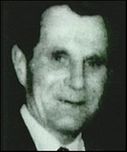
After a lot of leg work (no computers) they finally identified the victim as Zigmund Jan Adamski. A week after finding the body they made the journey to Tingley near Wakefield. This is a journey of thirty eight miles and would take you fifty-seven mins if you went down the motorway and over an hour by back roads and an hour an twenty-four mins on the train.
When they got to the address a young man answered the door and sat in a wheelchair was Mrs Leokadia Adamski or ‘Lottie’ as she preferred to be known. They discussed the discovery and she agreed that a friend of the family would come and make the identification. The friend was called Chris and he filled them in with a lot of details as they made the journey back across the moors. He explained the Mr Adamski had gone missing on Friday 6th June at 3.30pm – exactly five days before he was found. As far as Chris knew Adamski had no friends nor knew anyone in Todmorden he was a shy person who kept to himself and was known to locals as Ziggy.He could think of no-one who would do him harm.
While Chris was identifying the body he made the comment that ‘Ziggy’ had longer and thicker hair. This followed Alan’s view that it had been crudely shorn recently. He also confirmed that he had not had the injuries on his head when he had last seen him. They returned to Tingley and spoke at length with Mrs Adamski, she could think of no reason why he would have gone missing. He had been in good spirits the day he had disappeared and had been out for a shopping trip with his cousin who was over from Poland; Laska had been staying with them for the past two months and would be returning home soon. He was due to be the best man at his God daughters wedding which was the day after he had gone missing and he had been looking forward to it and had written a speech. They had spent the next couple of days searching for him but never thinking to look in Todmorden as he had no connections with the place. On the day he vanished Zygmund and his cousin Laska had returned from shopping in Leeds and they had all sat down to fish and chips and chatted happily over the next days wedding. He had seemed in a good mood and had not appeared worried over anything. He then said that he was going to the shop 100 yards away because they needed some potatoes. Laska offered to go with him but because the shop was so close he told her there was no need to bother.
Route from Adamski's Road to shop
. Though he had a heart condition he was generally well and Drs had told him that modest exercise was good for him. In fact he had been passed fit to carry out the strenuous work down the coal mine which if his heart had been a real problem he would not have been allowed if they believed it would have seriously compromised his health. When he left the house to walk to the shop he did not take his car or house keys, just a wallet with about £20 inside. The family never saw him again and he was not located for five days.
View from top of Adamski's Road, looking down towards the shop
Both Ziggy and Lottie had been prisoners of war in Germany, after the liberation they left Germany and came to England and it was here in Leeds where they met and married in 1951. He had worked down the colliery for 27 years and he was well liked, often taking a pint at the local pub. On the day he went missing one of his neighbours remebered seeing him and stated that he had asked him if he was heading off for a pint. Ziggy had replyed that it was too early for him and nothing in that short conversation had worried the neighbour. This appeared to be the last conversation he had except for his purchase at the shop. The shopkeeper noted that he appeared chirpy and again had not believed anything was bothering him. The groceries he bought were never found. Checks were made with local doctors surgeries and hospitals to see if any person matching the name and description of Ziggy had been admitted but nobody with even similar injuries could be found. A few days after his inquiries, Alan was on foot patrol when he bumped into Peter Sutcliffe (Not the Yorkshire Ripper!) who was a Station Sub officer at the local fire station and part-time worker at the coal station. He stated that he had been at the coal yard that day between 1pm and 1.30 pm, this was several hours after Trevor Parker had last been there. He had gone to the yard looking for Trevor, and when he realised he wasn't there, he had gone down the White Hart Fold Inn to find him. He confirmed that he had not seen a body on the coal heap when he had been in the yard. Parker confirmed that had met Sutcliffe down the pub at 1.30pm and they had stayed there for about two hours when Parker returned alone. The post-mortem put Adamski’s death between 11.15am and 1.15pm which gives us a couple of scenario’s which could have happened. 1. Sutcliffe had missed seeing Adamski on the coal heap. 2. Adamski had wandered in after Sutcliffe had left, climbed the coal heap and died 3. Adamski had been killed somewhere else, and his body had been placed on the coal heap The coal heap was also in view of the trains passing by and stopping at the station which would indicate that any passengers stood on the platform or looking out the window of a train could have seen the body, especially if it had been there for a couple of hours. Alan took all this information back to CID who said he died of natural causes just let it be! Having developed a good working relationship with Adamski’s wife, Alan felt he could not just leave it there, he thought she deserved answers. He submitted a report to the chief Superintendent and as you can imagine this went down well and he was told to leave well alone. He bumped into Peter Sutcliffe again, and they discussed the case over a cup of tea, Sutcliffe stated that he had gone to the station to make a statement, and a ‘CID man from Halifax’ had come to take it and told him that he might have to go to coroners court. In September of that year, PC Agley had come in and asked Alan if he had seen the local paper. It had been reported that James Turnball the coroner had concluded the inquest and recorded an ‘open verdict’ on the death of Zigmund Adamski. Neither had been called as witnesses even though they were the first officers on scene and nor had Sutcliffe who was a crucial witness in the fact that he confirmed that Adamski’s body had not been there before 1.30 pm. PC Agley had contacted the coroner's office and asked why he had not been contacted and was told that he had not been needed even though he was an officer in case reporting to the coroner. The Courts Findings The initial hearing was given over to Dr Alan Edwards, the pathologist, he reported many facts. Firstly that Adamski was clean and well cared for and did not appear to be sleeping rough during the missing five days. He only had one day's worth of beard growth seemingly had been eating during his disappearance but had not eaten the day he died. He had slight abrasions on his body but nothing suggesting that he had ever been severely assaulted. The death in his view had been caused by heart failure and underlying heart disease but agreed that this could have been caused by excessive exertion or fear or even stress of fending off an attack. The pathologist had also confirmed that there was no evidence of brain injury or stroke to suggest that he may have lost his memory. The burn mark caused by a 'hot or corrosive liquid' and was the Dr said, likely two days old so probably happened mid-way through his disappearance. Lottie stated in court that she had thought her husband looked like he had been scared to death and that in her view "somebody took him and dumped him." Chris, the family friend who had identified his body had also given evidence explaining how Adamski had tried to get early retirement from the pit due to the fact his wifes deteriorating disability and he wanted to serve as her full-time carer. He was still waiting for the coal boards decision and ironically had got it in the post while he was missing. He confirmed that Ziggy had no connection with Todmorden and of his utter devotion to his wife. Lottie had confirmed that her husband had left the house wearing a striped jacket and a sports shirt. He was wearing a watch, had his driving licence and money, these items were never found. He had never gone missing in the thirty years that she had known him. The coroner had stated on that first inquest that he found the case 'intractable' and that they should 'not leave any stone unturned' while investigating the matter further. He added "whatever can be done will be done, I shall see to that." He then adjourned proceedings leaving PC Agley sure that he would be called back to give evidence. On the 4th September 1980, the second session was held DI Boyle of Sowerby Bridge was reporting on the CID investigation of which there was very little. Several eminent Drs had been consulted in regards to the injuries and concurred that it was likely caused by a corrosive liquid but could not say what it was or if it was self-administered, deliberate or accidental. DI Boyle disagreed with Mrs Adamksi that the body had been dumped and stated he believed the man had died where he was found but he had no idea how he had got there. The contradiction of Sutcliffe's statement that he was present at the scene before the time of death was never presented to the coroner. The final session was on the 25th September 1980 ans was given over to several friends and relatives but produced no real evidence of what had occurred. In conclusion, the coroner admitted complete frustration saying "At this stage, there is nothing else I can do" but that the case was "by no means closed" though no further evidence had come forward and the inquest found an open verdict, and it remains unresolved some 37 years later. In 2008 John Hanson -Ex CID officer and author of Haunted Skies and David Sankey - a respected UFO researcher looked into the incident which you can read HERE They came to the conclusion that Adamski had fallen out with a member of the family and had been kidnapped and had died of a heart-attack, which would mean his body had been dumped on the coal heap. Though the family clearly stated that they had no connection with Todmorden. I'm sure if one was disposing of a body you would be more inclined to do so on an empty moor rather than in the middle of a town! In his book, Alan believes that Adamski was put there by someone and that he didn't arrive there under his own steam. And if the time of death is accurate, he did not die there either. So how did this case come to be linked with Alien abduction? A year after the inquest had ended a notable UFO researcher - Jenny Randles, wrote about the Adamski case. There had been a similar case -Travis Walton who had disappeared on November 5th, 1975 and had returned five days later claiming that he had been abducted, a film was made of his disappearance 'Fire in the sky.' Jenny had also investigated on many UFO reports in and around Todmorden including one reported on the 10th June 1980 that had occurred in the centre of Todmorden just half a mile from where Adamski’s body had been found at midnight, just hours before the discovery of Adamski. A young couple had reported hearing a strange noise over their house, ‘Like great water surges moving to and fro.’ Going outside they could see nothing causing the noise, but it just faded slowly into the distance until an ellipse of light appeared above their roof and glowed both green and red before seemingly climbing vertically and disappearing. Helicopters had been working on power lines and had been mistaken for UFO’s, so they put it down to that, and it wasn’t pursued much further, but when the press reported that Adamski’s body had been found nearby, it looked more interesting. There was nothing to link these two incidents beyond coincidence but when Jenny put the Adamski case, the UFO report and then Alan’s later experience together and wrote a review published in a specialist UFO magazine called Flying saucer review. A tabloid had picked it up and was trying to get Jenny to reveal who the police officer was, but she refused. Facts then got garbled, and a front-page story headed UFO DEATH RIDDLE purporting that UFO researcher deemed the Adamski case a close encounter of the third kind meaning that he had ‘met’ an alien. And the rest is history, Adamski will always be linked with aliens even though there is no evidence though it is bloody sus. Listen to the our podcast on the Adamski Death HERE #UFO #Aliens #Paranormal #Alien Abduction #Murder #Kidnapping #Strange Disappearance #Ghosts
The Rougham Mystery
The small Suffolk village of Rougham lies four miles south-east of Bury St. Edmunds and has been the site of a strange phenomenon. In fact, the Suffolk area has had some curious incidents ranging from the 12th Century where you have the incident at Woolpit where upon two green colored children appeared speaking an unknown language. To the English Roswell at Rendlesham Forest in the 80’s and the Black Shuck in 1577 and the Kersey time-slip. The most famous incident of a time slip is possibly the case of Versaille which dates from 1901 When Two English academic ladies visiting Paris apparently found themselves wandering the gardens of the famous palace in the time of Marie Antoinette.
Palace of Versailles
Rougham, just a small village, has had twenty known incidents of time-slips and possibly more to be discovered. On scouring the internet, I came across a fascinating report written by Carl Grove which can be read HERE In October 1926 Ruth Wynne was tutoring for a young lady by the name of Evelyn Allington. Ruth’s father was the Reverand at Rougham Rectory, and Evelyn's lessons would take place there in the morning and then the girls would take a walk around the surrounding area of an afternoon. On this particular afternoon, they decided to walk to the nearby church of Bradfield St George. Here is their account as told by Ruth Wynne: One dull, damp afternoon, I think in October ’26, we walked off through the fields to look at the church of the neighbouring village, Bradfield St. George. In order to reach the church, which we could see plainly ahead of us to the right, we had to pass through a farm-yard, whence we came out on to a road. We had never previously taken this particular walk, nor did we know anything about the topography of the hamlet of Bradfield St. George. Exactly opposite us on the further side of the road and flanking it, we saw a high wall of greenish-yellow bricks. The road ran past us for a few yards, then curved away from us to the left. We walked along the road, following the brick wall round the bend, where we came upon tall, wrought iron gates set in the wall. I think the gates were shut, or one side may have been open. The wall continued on from the gates and disappeared around the curve of the road. Behind the wall and towering above it was a cluster of tall trees. From the gates, a drive led away among these trees to what was evidently a large house. We could just see a corner of the roof above a stucco front in which I remember noticing some windows of Georgian design. The rest of the house was hidden by trees. We stood by the gates for a moment, speculating as to who lived in this large house, and I was rather surprised that I had not already heard of the owner amongst the many people who called on my mother since our arrival in the district. This house was one of the nearest large residences to our own, and it seemed odd that the occupants had not called. However, we then turned off the road along a footpath leading away to the right to the church which was perhaps under a hundred yards off. On leaving the church, we cut down through the churchyard into the fields and home, without returning to the road or the farmyard. It was then drizzling rain. On arriving home we discussed the big house and its possible occupants with my parents, and then thought no more of it. From this description it's not clear as to which direction they have taken and Carl speculates whether it is in the location of Colesville Grove or the vicinity of Bradfield St. George. Ruth Wynne goes on to say: My pupil and I did not take the same walk again until the following spring. It was, as far as I can remember, a dull afternoon with good visibility in February or March. We walked up through the farm-yard as before, and out on to the road, where, suddenly, we both stopped dead of one accord and gasped. ‘Where’s the wall?’ We queried simultaneously. It was not there. The road was flanked by nothing but a ditch, and beyond the ditch lay a wilderness of tumbled earth, weeds, mounds all overgrown with the trees we had seen on our first visit. We followed the road round the bend, but there were no gates, no drive, no corner of a house to be seen. We were both very puzzled. At first, we thought our house and wall had been pulled down since our last visit. But closer inspection showed a pond and other small pools amongst the mounds where the house had been visible. It was obvious that they had been there a long time. You may think that they had just got lost and had the wrong location, but these women were only walking a distance of about a mile and a half as the crow flies and were doing it on a regular basis. It is unlikely that they were not familiar with their neighbourhood.
Map of Kingshall St and possible locations of sightings
James Cobbald The next account is from James Cobbald (his pen name) he had been told about the disappearing house by another child when he was 11 yrs old. He had laughed at the girl's account and had told his grandmother about it. She then told him that her father; Robert Palfrey, had seen the house. Around 1860 her father had been out in the field making a haystack on a warm June afternoon; as he looked across the field, he could see a house, It was of red brick, and set in a garden with flower beds full of blooms, edged with red bricks placed slantwise. It had two wrought iron gates, one 4 ft wide, the other 9-10 ft. A sudden chill had developed. He had returned home and told his family, and all returned to the location only for the mystery house to no longer be there. The location was off Kingshall Road and in the direction of Colesville Grove which is a large grove of dense woodland. Here is how Carl describes his visit to the grove: 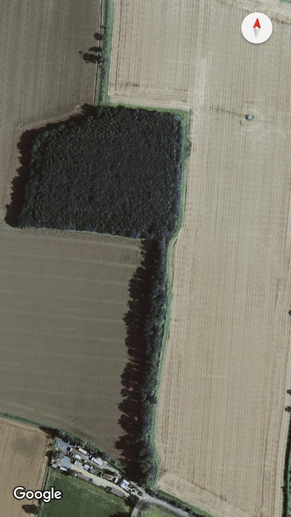
Most of us have been in woodlands from time to time, but the Grove is something different. It is overgrown with every type of nettle, bramble, and thorn. Just moving around is a major undertaking. In the southern part, where I entered, the earth forms numerous mounds and ditches, very like the buried ruins of a large building. Heading north from the central part is a distinct avenue of trees; the south avenue contains a few newer trees in what would have been the driveway. But there can be no doubt about their significance: nobody would consider planting two substantial avenues of trees leading just to a piece of derelict woodland. There must at one time have been a large building at that location. Perhaps not a stately home, but certainly a mansion of some kind. Note that the trees do seem to be around 200 years old, consistent with our deductions from the available mapping. It was not long after this that James Cobbald had his own experience of the disappearing house. George Waylett, the local pork butcher, was born in nearby Hessett in 1851. He reared the pigs then would slaughter them, then he would then bring the carcasses over to his shop in Rougham. Cobbold would accompany him on his Saturday rounds, making deliveries with his pony and trap. On a warm June day, Cobbold and Waylett were heading south down Kingshall Street when the house suddenly materialised with a loud swooshing noise. The pony uttered a kind of scream of terror and reared up; the butcher fell out of the back of the trap. Then it bolted, and eventually, young Cobbold was able to bring it under control. In those seconds he had had a clear view of a double fronted red brick house. Three storied, of Georgian appearance, and a garden comprising of a large oblong flower bed flanked with two circular beds. And three smaller oblong beds in front, with pansies and geraniums all in bloom, all edged with red bricks placed slantwise, also rose trees. Then a mist enveloped the house, and it faded away. Waylett scrambled to his feet and exclaimed, "That ******** house! That's about the third time I've seen that happen!" Despite Waylett's warnings, the young lad could not resist entering the field and looking in vain for traces left by the mystery building. It is estimated that this sighting took place in 1908 Bentley/Davies sighting The next sighting was In the 1940s, Edward Bentley was working for the Bury St Edmunds men's outfitter Aubyn Davies. Bentley, aged about 20, used to go out with his manager in the late Summer, distributing catalogues in the surrounding area. After harvest time, the farm workers had their bonuses and could afford new outfits. Davies was driving, and Bentley and another member of staff were delivering the catalogues. It was a warm, sunny day. They were heading south down Kingshall Street when Bentley suddenly spotted a house off to the right and quickly told Mr Davies that they had missed one. Davies glanced back and reversed the car, but there was now no house to be seen. Bentley put the affair down to a mental aberration, but years later, when discussing the incident with his nephew, Chris Jensen Romer, he realised that he must have seen the ghost house. He later pointed out the location as the same as the prior sightings by the Grove. Sandra Hardwick The next incident was in 1974, Sandra Hardwick was 14 yrs and lived in Rougham, and on a warm summers evening she was meeting her friend at the youth club which was situated at the North end of Kingshall Street (Sandra lived at the South East end of Kingshall) She had promised to get home before dusk and as she was approaching the two bungalows on the east side of Kingshall Street when a house suddenly appeared on her right. It had become unnaturally quiet. The house was brightly illuminated, "like the sun had come out on it on a bright Summer's day." But it was now extremely cold. "I thought I was going bonkers. It was beautiful -- thatched roof, windows open, and a garden with yellow and pink flowers, a fence and a gate." The curtains were blowing out of the open windows. But despite the beauty of the scene, Sandra was terrified, and she pedalled frantically away. Sandra was quoted as saying, "The windows were very small, but open with the curtains blowing, and it was a happy, carefree, friendly house. It had a thatched roof; it was like a perfect country cottage that everyone wants to live in. But there was nobody there." Jean Batram On a cool but sunny Sunday afternoon in February 2007, Jean Batram and her husband Sydney (better known as "Johnnie"), a retired couple living in Great Barton, decided to go for a drive around some of the picturesque local villages. They headed south-east towards Rougham, which Jean had never visited before, and drove south down Kingshall Street. They had just passed the two bungalows opposite Colville's Grove when Jean spotted, on her left side, a large Georgian house. It lay across a newly harrowed field, in front of some woods. She pointed it out to Johnnie, who glanced over briefly, and said that as it was such a lovely house, she would take a closer look at it on the way back. After a pleasant drive, they returned along the same route. But there was no house to be seen. Jean was puzzled and asked Johnnie if he was certain they had come out on the same road. He told her he was certain as it is the only road running south from Rougham. Jean became increasingly worried over the coming weeks. She felt that they should report the incident to someone, but Johnnie disagreed vehemently. He declared that he had no wish to be subjected to ridicule, and would deny that he had seen the house himself. For eight months Jean agonised over the matter. Then, during a phone call to a friend of hers, Katarzyna Powell, she admitted that she had seen something very strange and didn't know what to do. To her surprise, Katarzyna replied, "Oh, you haven't seen the ghost house, have you?" Jean had had no idea that others had also witnessed the same phenomenon. Katarzyna went on to say that her daughter's boyfriend had also seen it, while out driving his van. The real problem was that while most other witnesses had seen a house on the west side of Kingshall Street, she had seen hers on the east side. Peter and Mary Cornish had told Carl that there was a general disagreement amongst the Rougham community about which side the house appeared on, suggesting, perhaps, that other sightings on the east side had taken place but remained unreported. Mary's grandmother had always told her that the house was seen there. She was certain that it was a fairly large Georgian style house, and that it was standing somewhat to the right of Gypsy Lane, a narrow track which runs from Kingshall Street immediately south of the second bungalow. Carl states "As Phil explained to me, Gypsy Lane is a Greenway, a path originally employed by monks to transport wood to the Abbey at Bury St Edmunds. The Lane is an area subject to unusual events: ghostly figures, strange lighting phenomena, and other interesting occurrences." 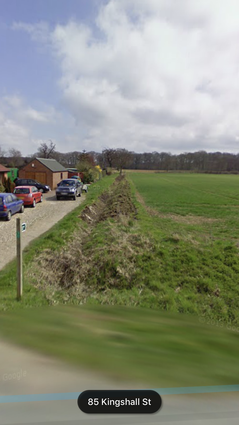 View of Gypsy Lane from Kingshall St View of Gypsy Lane from Kingshall St
Another focus for strange events is Gypsy Lane, the track leading off Kingshall Street immediately south of the two bungalows. The Rose family, who have lived in the second bungalow for many years, have had many occurrences to report. On one occasion, Edith Rose was crocheting in the living room that is right alongside the Lane. Suddenly half of the room became intensely black. When she placed her hand inside the dark zone, she could no longer see it. It is very hard to account for such a phenomenon in any normal physical terms, and I have never come across it before. Could it be a localised time slip back to a night-time period?
Another time, several monks were seen walking past the living room window. Shadowy figures were often seen coming up the front path, always at dinner time. The Roses' horse would refuse to walk past a certain point on Gypsy Lane. Often horses and ponies would break free and run off in a panic. Bob and Win Barker, who lived in a house at the northern end of White Horse Lane, about 400 yards south of the Grove, often independently observed balls of light in their bedroom. The lights would emerge from a wardrobe on the right of the room and travel to the left, about two feet below the ceiling until it disappeared into another bedroom. An elderly lady and her two daughters, who live in the main part of the village, have a good view of the fields leading up to the Church. On many occasions, they have witnessed a strange arc of light come up out of the ground and form a kind of rainbow. The light persists for a considerable period, but they have been afraid to mention it to others, the last sighting being 2011 Years ago, when Rougham extended to what is now Moreton Hall, the railway line ran at ground level, and there was a level crossing where today a small bridge exists. One of the callers responding to Carl's appeal in the Free Press, a gentleman named Peter Webb, told him of a rather sinister experience that his father had at that spot. Cycling over the crossing one evening, Mr Webb had seen what looked like a body lying about 50 yards down the track. It seemed as if a terrible accident had taken place. Dismounting, he walked towards the body, only for it to disappear before he could reach it. Another story told to Carl by Phil Sage the local historian - he and his wife had just moved into a cottage near the Bennet Arms in Rougham, and he was home on extended leave when one evening a noise on the stairs attracted his attention. His baby daughter was in her cot on the landing, about six steps up. Standing over her was an old lady, wearing a knitted hat. As he watched, with his eyes popping out, the figure faded away towards the window. He was reluctant to worry his wife by telling her about this but mentioned it a few days later to an elderly neighbour three doors away. "Oh, that's nothing to worry about," she declared. "That's just old Millie, looking after your baby. She's often around here." In the context of the Rougham mystery, ghosts are minor players. STRANGE ENERGIES Most of the mystery houses seen in Rougham appear in the vicinity of Colville's Grove, either nearby at the end of Gypsy Lane, or in the same field, just in front of it. Phil Sage is firm of the opinion that the Grove is the source of some unknown energy, and that it is this energy that is responsible for all the strange phenomena going on. Phil first encountered the Grove as a young man, when he decided to train as a gamekeeper. His mentor, an older man with much experience in the field, took him to the Grove to catch rabbits. After a while, however, the old gamekeeper grew uneasy, and he suddenly said: "Come on boy, I want to get out of this place. There's something not right here." Phil admitted that he disliked being there. Later, when training dogs, he found that they all reacted with fear and aggression when he tried to make them enter it. When Carl visited the grove he stated "Perhaps because it was a blazing hot day when I visited the Grove myself, or perhaps because I am insensitive in some way, I didn't feel anything sinister. It is a physically demanding place, overgrown with everything thorny and brambly. It reminded me of how one might imagine the situation around the castle where Sleeping Beauty was imprisoned. But there was something a little odd, which only came to me quite recently. I can't remember hearing any birdsong while I was there." Later on, Phil was told by members of a family whose ancestors had lived near the Grove, three generations ago, that a witches' coven used to meet there. In the 1970s, Phil volunteered to help archaeologists search for Roman artefacts in the field near the Grove. He was using a metal detector on a lovely afternoon in early summer, working his way along the western side of the Grove. He had already found several items. His headphones were set on "Deep Search," and suddenly he could hear a rushing noise. When he pulled them off, he realised that the sound was coming from behind him. He turned to see what appeared to be a vortex. It travelled in a circular motion like a wheel, sucking in branches and material, heading towards him. He didn't move. The vortex swept past him, and in that instant, he felt terrible. It continued, and when it reached the end of the Grove, everything just went quiet. Phil remained in a shaken state for some time afterwards. When Carl asked Phil if he thought his metal detector might have attracted it, he agreed that this was possible. Later, two boys scrumping apples along with a hedge in Bradfield St George, near where Phil believes the two ladies saw the house in 1926, heard a rushing wind and saw something similar whirling around with sticks suspended in it. It went past them. One wonders if the rushing noise, "as if of air displacement," heard by Cobbold, connects in some way with the vortex phenomenon. If so, is it the case that the vortex is a factor in the generation of a time slip? If it is, this is a significant clue. A friend of Phil's, from Woodbridge, was a dowser, and Phil asked him to see if he could "pick up" any unusual energies around the Grove. What happened next, besides being a piece of high drama, eventually led to a breakthrough in Carls investigation. Phil's friend found three places near the Grove where very strong energy was emerging. At the third, and most powerful, his dowsing rod (a metal one) was thrown out of his hands, and he became agitated. He had suffered from cardiac problems and had got a pacemaker; this was now going crazy. Phil helped him back to his car and placed one of his heart tablets under his tongue. After some coffee from a thermos, he slowly recovered. "Boy oh boy," he declared. "I had a funny feeling. It came up my detector. I'm not going there again!" By coincidence, Phil's friend later came across an old map (very expensive) in a shop in the West Country which showed the Rougham area. There was a dark mark within the Grove, presumably a building. He tried, unsuccessfully it seems, to photograph it. A few years ago, the couple who ran the Rougham post office/shop took a holiday, and it was arranged that another husband and wife team would take over while they were away. The wife had an interest in unusual phenomena and heard about Phil's researchers. One day she invited him to go to the back of the shop to discuss something. Phil was relieved that her husband was also there. It seemed that having learned about the strange goings-on near the Grove, the lady wanted Phil to take her there for a visit. She had had some experiences of her own, so was a sensitive. Her husband encouraged Phil to agree, and one evening they entered the Grove and followed a path through it. (By the time Carl went there, any signs of formal pathways had long gone.) The lady began to act very strangely; she was clearly disturbed. Something had badly affected her, and she was frightened and sweating profusely. She asked Phil to get her out immediately, but he was himself similarly affected. They managed to help each other leave the wood. "There's something here we don't understand!" she declared. Later she told him that she had once had a similar experience in the Falklands, when she had travelled with the UK armed forces as an interpreter. All these accounts lead us to some firm conclusions: 1. The Grove is at the centre of a zone in which some kind of strange energy holds sway. It can cause people to see visions of the past, but it can also be dangerous if approached in the wrong way, or at the wrong time. It can make people feel sick, dizzy, and weak, sometimes for hours. Many animals are afraid of it. 2. This energy can be perceived by sensitive people, and detected using the methods of dowsing. Maybe the witch coven had detected it and were trying to employ it for their own purposes. 3. The energy seems to come up from the earth, and may manifest in the form of a vortex. But ghosts, shadows, and globes and arcs of light have also been observed. England is covered in many energy or Ley lines as they are commonly known, and a famous energy line is the Michael and Mary line. It runs from St Michaels mount in the South West of England crisscrosses its way across the south of the country and ends at the East Anglian coast. It goes through major sites including Avebury and Glastonbury, and It skirts Colesville Grove to the south but passes right through the site of the 1926 sighting in Bradfield. On its way from Bury, the Michael current was said to leave the Abbey ruins, go through the Norman Tower, and on to a Masonic lodge in Charter Square. It so happens that one of Carl's associates, Chris Jensen Romer, recently posted on his website an account of a strange experience he had as a teenager at that exact location. He was with a school friend between classes and saw a group of children in the uniform of his middle school, St James, near the West Front of St Edmundsbury Cathedral. Among them, he saw his younger self. Very soon he began to feel extremely ill: sick, dizzy, and a severe headache, so had to be sent home. Much later he decided that he must have experienced some hallucination caused by an attack of migraine. But it now seems more likely that he did see his younger self in a classic time slip, and afterwards suffered the same symptoms that others have reported after an encounter with the mysterious energy source. After leaving the Bury area, the line goes through Woolpit, famous for the "Green Children" mystery. Here is a link to an interactive map of the Mary & Michael ley lines So what is the conclusion to this mystery? is the house real and time has thinned enough for us to see a glimpse of the past? Is it a 'ghost' house and why does it appear in different locations? One thought is that in different timelines the house would have stood in that particular spot and in relation to the Sandra Hardwick's sighting maybe in that timeline a thatched cottage was built. Whatever the explanation is is intriguing and clearly more investigation is needed into the connection of the grove and the mystery house and the energy sources. I could not have published the Rougham podcast nor this blog without the extensive work of Carl Grove whom most of this article is written from his work, I urge you to read his full article as it is far more extensive than I have time to write and contains many other stories of time-slips and strange occurrences from around the UK, thank you Carl. Carl Grove's full report Click here for a link to the podcast on the Rougham Mystery A Parapsychologist is one who investigates and studies scientifically the interaction between our bodies and the environment in ways we do not yet understand – Dr Barry Taff On August 22nd, 1974 Kerry Gaynor was in Hunter's bookstore talking about his work to a friend. Little did he know that there was a lady in the next isle listening who would expose them to one of their most intriguing cases. Doris Bithers approached Kerry and told him that she too had a ‘ghost’ problem and asked him to help her. He took her number, and he and Dr Barry Taff went to see her. She lived in a small house 11547 Braddock drive, Culver City Los Angeles. It was quite a dark house and already had a reputation for being haunted. It was over one hundred years old with a basement, and the bedrooms were a later addition.
The unassuming 11547 Braddock Drive, Culver City
Even though Doris had been the one to request their help, she was very evasive when answering questions about her life and backstory. She would not tell them her age or give them any medical background. They had a two-hour interview Doris told them what had been happening. When the family had first moved into the house, an old Mexican lady in her 70’s or 80’s had knocked on the door and told Doris “You need to get out. I used to live here in this old house, back when it was just a farm, and I was a little girl. There is something very evil here. This place is haunted, and you need to get out.” And then she dropped a bombshell. She told them straight out that she had repeatedly been attacked and raped by the ghost. Dr Taff put a P at the top of his paperwork his way of saying psychosis he thought she was mentally ill. They thanked her for her time, and they left. She called them about a week later saying that friends and neighbours had witnessed the events and asked them to come back. The witnesses described, strange lights and smells and would see things out of the corner of their eyes and it disturbed them. Thankfully they did return; it was an incredibly hot summer yet the house was very cold, Ice-cold and the bedroom colder still, and yet they weren’t able to record or measure it. A horrific stench of rotting flesh which would also appear which they were never able to find the source. The smell would come and go with the coldness. They were interviewing Doris in the kitchen with one of her friends when a lower cupboard door opened and a frying pan flew out and landed on the floor. They checked the kitchen for wires and any other reason that it may have occurred but could find none.
Images taken when Doris claimed the entity was near her
As they investigated the house, Doris would tell them where the entity was, and Kerry Gaynor would take a Polaroid photo. In all the pictures where Doris said the ghost was the image was bleached out. He decided to do a control picture when she said it had gone and the Polaroid took a perfect picture. It occurred every time she said the ghost was there.
Control image taken when Doris stated that the entity had left
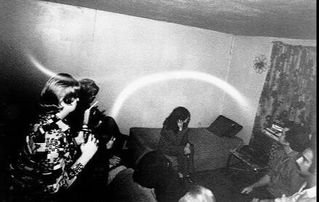
Typical poltergeist behaviour commenced with objects being thrown randomly around the house with the main events occurring in Doris’s bedroom. Lime green plasma lights would shoot across the room; They blocked out all the light in the room to ensure that it was not coming from the outside but they were then unable to see where the lights were manifesting. So they had to put black poster boards up all over the room with a number and a magnetic orientation reference grid so they could see where they were manifesting and going to.
Nothing happened while they were there but then they get a call at one A.M a few days later from Doris who was hysterical. Some of the boards had ripped off the walls, it had pulled the plaster and paper with it and had nearly hit her. They arrived at the house and tried to reconstruct the incident. The orbs were ripping around the room, and they asked the entity to tear something off the wall. They hear this ripping noise, and one of the boards goes flying off the wall and hits Doris on her head, they ask it to do it again, and once again one of the boards rips off and lands at her feet, in a room full of people it targetted Doris. An electric fuse box tore itself off the wall and had nearly hit her on the head, and a candelabra had nearly hit her.
Another image taken of the 'orbs' in Doris's bedroom
When interviewing the children, they revealed that certain rock songs would incite the entity. One song, in particular, on the Uriah Heep album “Demons and Wizards” that talks about good versus evil and good winning would cause the haunting to intensify. They decided to test this out, and on one occasion a large apparition of a man, from the lower waist up manifested in front of them. It was made up of these lights not illuminated by them. You could see the upper torso, the shoulders, the brow ridge his head it was detailed, and it was articulating, moving its arms and then it disappeared as soon as it had appeared. The image was in the same lime green light that they had seen in the room. They had nine professional photographers taking lots of photos colour, regular, sensitive all types of film but did not capture a single image, they all wrote down what they saw, and everyone had written down the same thing. There were at least twenty-five to twenty- eight people in the room which had all seen the same thing. If only a couple had seen it, then it would have been discounted as a hallucination but not with all of them seeing it. Dr Taff was at the address for a total of ten weeks during that time no sexual assault occurred; the rapes had occurred long before Dr Taff had started to investigate, he deduced was not, in his professional opinion, the result of spectral rape, .a.k.a. spectrophilia, but a rather disturbingly real poltergeist outbreak. Dr Taff believes that poltergeist activity is possibly linked to seizures & epilepsy The most extraordinary thing we’ve ever come across it happened over and over, a plethora of phenomena – Kerry Gaynor When talking to Xavier Ortega from Ghosttheory.com Doris’ middle son, Brian Harris confirmed that he had witnessed the bruises on the inside of his mother's thighs and legs and the attacks and that although the film had exaggerated a lot of the incidents, though he thought Barbra Hershey had portrayed his mother well. He also gave some background on Doris’s upbringing It turns out though that Doris’ childhood was not the best. She had been messing around with Ouija boards and doing séance’s, drinking and doing drugs through the drink and drugs may have been a consequence of dabbling with the occult. Her parents finally kicked her out due to her behaviour and by the time Dr Taff had come to visit her she had four children by as many different fathers and was struggling to bring them up on her own. He admitted that all the family had been attacked in some form either pushing biting or scratching. He claimed there were four entities in the house and that they would show themselves all the time sometimes they were translucent and foggy and other times very detailed and solid looking. They would walk past them as they were watching tv all the time. “The whole rape thing was real. My room was right next door to my mother’s. I would hear the attacks happening. Things being thrown, her screaming. Then she would come out of the bedroom and have all these bruises. On her legs, her inner thighs. Just like in the movie.” “…there were times where we would see it happen in front of us. It was like if a man was standing in front of my mother and would start to beat her. Imagine a woman being beaten. You could see her being picked up and thrown around. Sounds slap…but there was no one there actually to do it.” “we all felt it too. pulling, biting and scratching…we were all attacked.” He stated that when the team would turn up it would be chaos as you would have all these people crammed into this tiny house and when they would leave all hell would break loose as though the spirits were unhappy that they had told someone about them Dr Taff stated that Doris just couldn’t take anymore and eventually left without telling them they finally found her and they visited her and she told them within a couple of weeks of moving in was having activity in the new house and so were the neighbours on either side. They were coming home and finding rubbish on the floor and plates stacked up. They carried on with their investigation, and on one occasion they had a recorder with them, they turned out the lights and heard a loud crash as a vase smashed on the floor in front of them. They then recorded the sound of deep breathing; they hear footsteps then a dragging noise then the mic turned itself off. At no time did they hear anyone moving or the breathing. She moved again. He finally caught up with her at the premiere for the film the Entity, and she told him that it had almost stopped. Brian claimed that his mother had died in 1995 from pulmonary arrest aged 58 Interview with Dr Barry Taff here Interview with Kerry Gaynor here Interview with Doris's son here |
AuthorJo has been interested in the supernatural since long conversations with her invisible twin friends. Ghosts or imagination? who knows but her insatiable thirst for the paranormal was born in those long forgotten conversations Archives
November 2018
Categories |
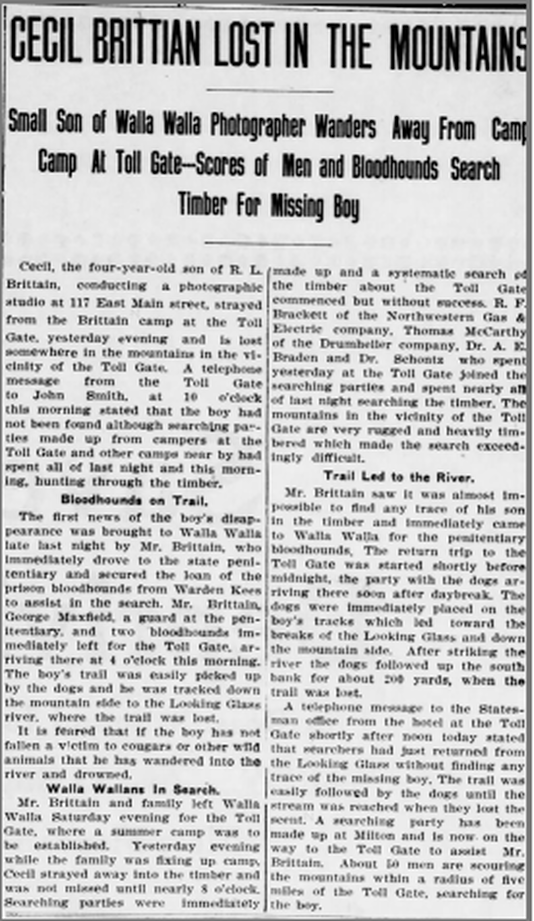
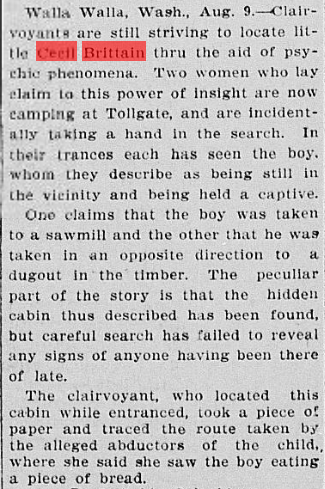
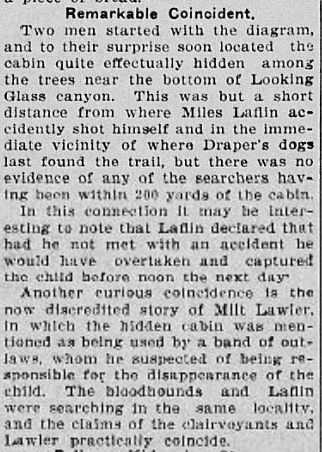
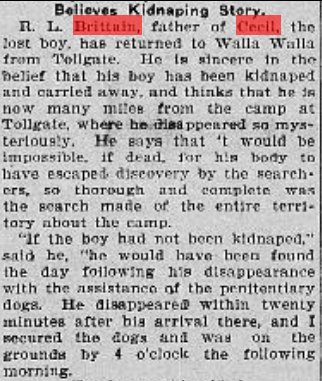
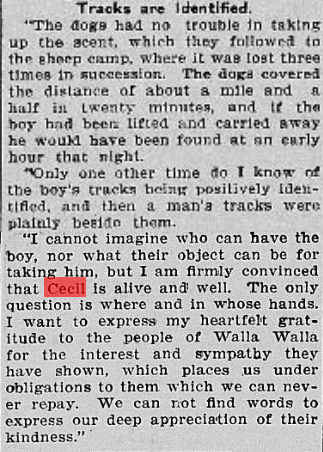
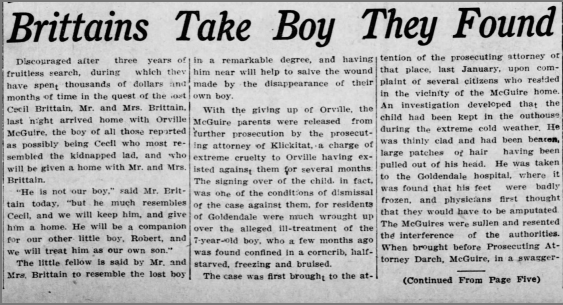



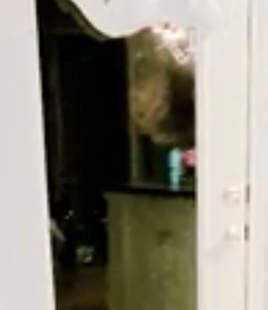
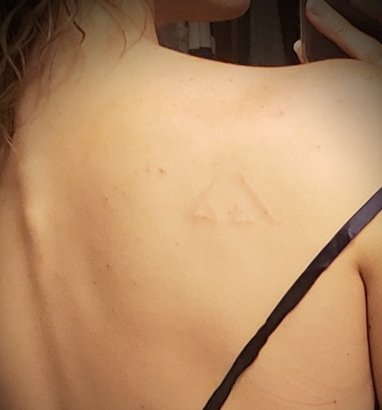
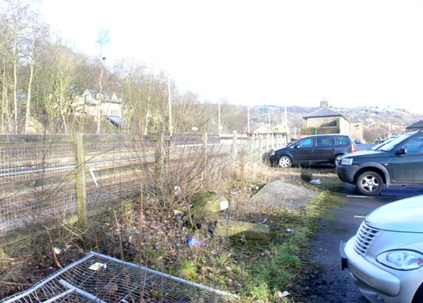
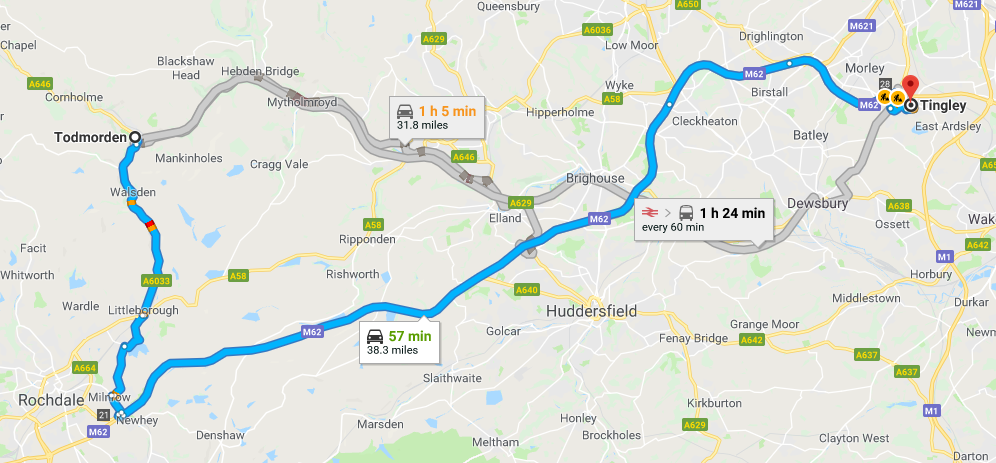
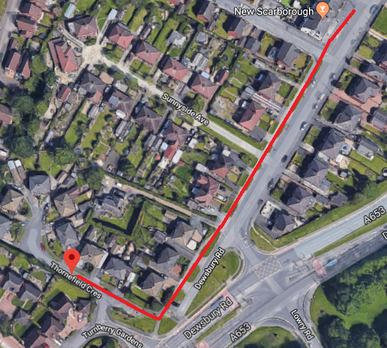
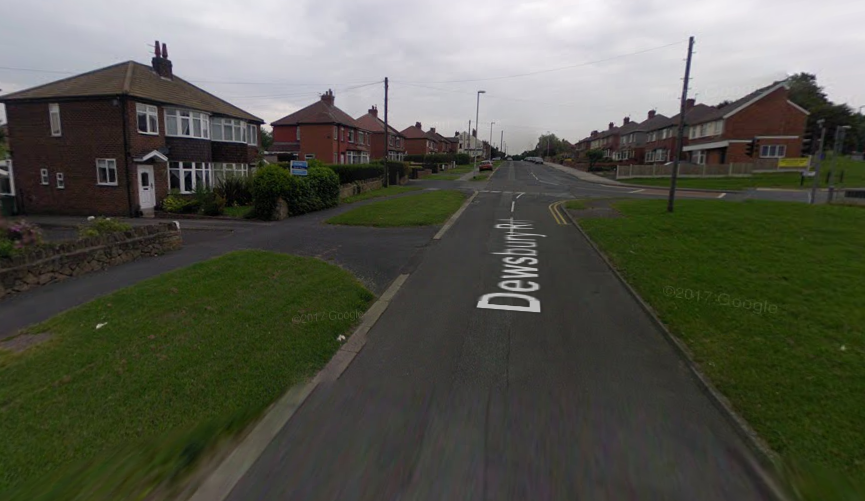

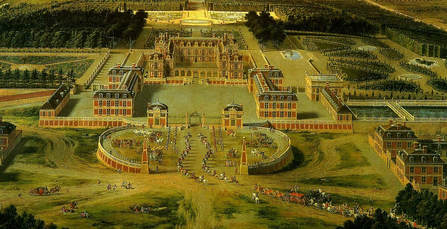
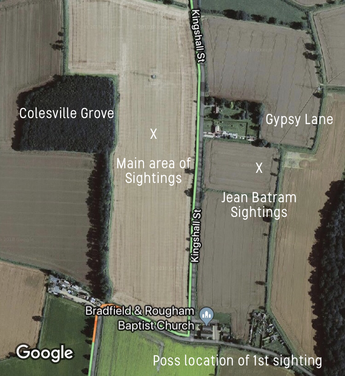
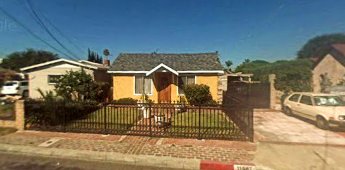
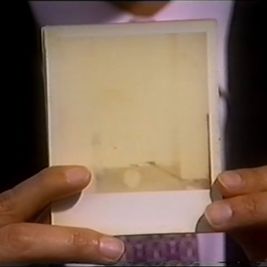
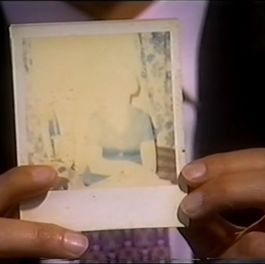
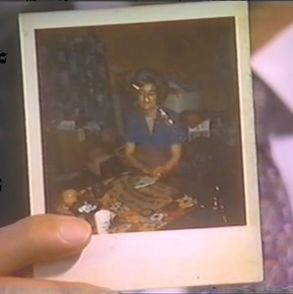
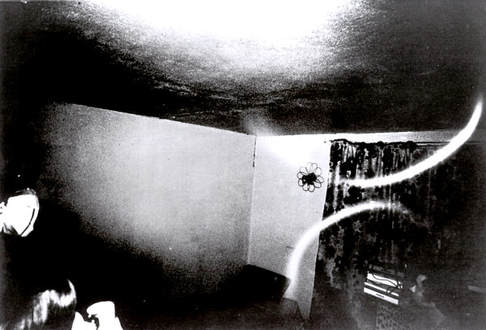
 RSS Feed
RSS Feed